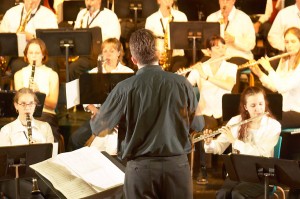 What is band tour?
What is band tour?
A band tour is when a band goes around to various schools and gives a performance. Usually, this is a high school band. But a college or university band may also go on tour. The different schools they visit may be elementary schools, junior high or middle schools, and other high schools. They may even be colleges and/or universities.
Why do bands go on tour?
There are many reasons why bands go on tour. For one thing, going on tour lets the band be exposed to multiple situations, giving them practice playing for these different audiences.
Also, a band visiting schools with younger students can serve as a source of inspiration for the children. They can enjoy a short concert and learn about different types of music. The band members can be role models for the younger students. They can see what is possible if they join the band and are diligent to practice their instruments.
On the other hand, visiting colleges gives the band students a glimpse into college life. The band students can also find out about study programs at various colleges. They can start to consider their future. They can begin thinking about what they are going to do after high school. Furthermore, a college visit gives the band the chance to perform for the university music department. There they can receive feedback and constructive criticism to help them improve as musicians. If some band members are especially talented, they might even be recruited to attend that college. They might get a scholarship or other incentive as a result of band tour.
When does a band usually go on tour?
A band usually goes on tour sometime in the spring. When the band has a tour in the second semester, the band has plenty of time to practice several pieces of music. They can build up a repertoire. Also, a spring tour gives the band time to raise the necessary funds to make the tour possible.
Where does the band go when they go on tour?
Where a band goes when it’s on tour depends in part on how much money they have available. Usually, the band tours the local elementary and junior high/middle schools. When picking colleges to visit, the band usually goes to schools that are within a reasonable driving distance. If the tour involves overnight stays at a hotel, then they probably will not go further than a day’s drive.
How long is band tour?
The length of a band tour is another thing that is restricted in part by the funds that are available. Longer tours cost more money! But money is not the only thing to consider. Since the band members are also students, there is the question of how much time off from classes they can take. Taking off more than three or four days begins to be a problem for making up missed classes, homework, and exams.
How can they afford it?
Going on tour isn’t cheap. Staying in hotels, hiring buses for transportation, eating meals, and filling up the gas tank are all expenses that must be covered. Consequently, the band must raise enough funds to cover these costs. The band has various options for earning money. They can hold bake sales and car washes. They can participate in a musical marathon, where people promise to pay them so much money for every hour they play. They can have a concert. All these are methods the band has for earning money for the band tour. Even so, the band usually doesn’t have all the money they need for the tour by the time they are ready to travel. So there is generally a per-student fee associated with the tour. This fee might be reduced or waived in certain circumstances. For example, if there are several band students in one family, maybe they might get a discount on the fee total. Or if a student is a hardship case, then he might not have to pay the fee. But most of the time, the per-student fee is reasonable enough that all the band members are able to go on tour.

